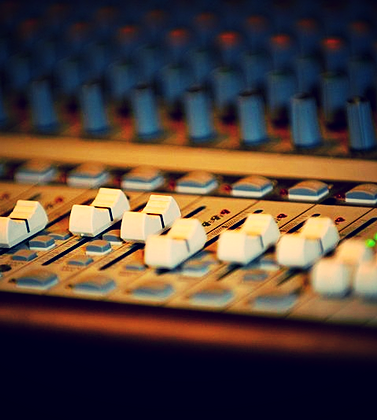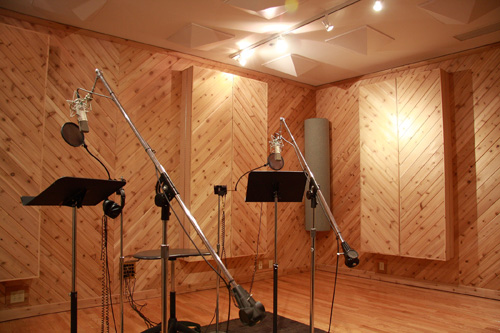Recording can be fun, but for me, the most
rewarding part of any project is doing the final mix. It's at this stage
of the proceedings that effects and signal processors can be used to
turn a simple recording into a major production -- but it's also easy to
overdo things and spoil the end results. This month I've put together
20 easy-to-remember tips that will allow you to control your effects
units rather than vice versa. And so, without further ado and in no particular order of importance:
1. Reverb creates the illusion of space, but in
doing so it also 'smears' the stereo localisation of the original sound
source, just as it does in real life. If you want to maintain a specific
stereo placement for one or more sounds in a mix, consider using a mono
reverb effect and panning the reverb to the same position as the
original dry sound.
2. Reverb is very useful for making vocals sound
more musical and for making them sit with the rest of the mix, but
adding too much will have the effect of pushing the vocals back, rather
than allowing them to take front position. Experiment with pre-delay
values of 60-100mS to help counter this, and also try using a reverb
patch that has a lot of early reflections, as these help reinforce the
dry sound. You can learn a lot from listening carefully to records you
like to see how much and what type of reverb is used. Often it's rather
less than you think.
3. Bright reverbs can flatter vocals, but may
exaggerate sibilance. As an alternative to de-essing the vocals, try
instead de-essing the feed to the reverb unit, so that sibilance is
removed before the reverb is applied.
4. Reverb is probably the most important effect
in the studio, so don't compromise by using a low-quality software
reverb plug-in just because you're short of processing power. Use a good
external hardware reverb unit if you have one, otherwise choose a more
powerful software plug-in to treat the vocal track in non-real time.
This may involve off-line processing or doing a real-time 'bounce to
disk' of the vocal track in isolation, via the plug-in.
5. Vocals almost always require compression, but
rather than doing all the compressing at the recording stage, apply a
little less compression than you think you might ultimately need, then
add further compression when you come to mix. This dual-stage process
ensures you don't record an overcompressed sound, whilst still allowing
you to even out the level of the recorded signal.
6. Compressors bring up low-level noise just as
effectively as they do low-level signals, so try to gate the signal
prior to compression when you're mixing. Also, use no more compression
than you need, or the signal-to-noise ratio may be compromised
unnecessarily. However, it's usually unwise to gate the compressor input
during recording for the reasons explained in the next tip.
7. Avoid gating during recording if at all
possible, as a badly set gate can completely ruin an otherwise good take
by chopping out low-level sections of the wanted audio. Instead, gate
during mixing, when you have the chance to reset the parameters and try
again if it doesn't work out first time. A further benefit of this
approach is that any noise, crosstalk or spill accumulated during
recording will also be gated out.
8. Always gate signals prior to adding reverb if
you can -- gates can easily chop off the tail end of a long reverb.
Furthermore, if you add reverb or echo after gating, any minor gating
artifacts may be completely
| "It's at the mix stage
of proceedings that effects and signal processors can be used to turn a
simple recording into a major production -- but it's also easy to overdo
things and spoil the results." |
hidden by the natural decay of the reverb or echo.
Any noise added to the mix by the reverb unit should be negligible
providing you've paid attention to gain structure and level setting when
adjusting the effects.
9. Don't always set your gate to fully attenuate
the signal when the gate is closed. In some situations, it may sound
more natural if a low level of background sound is still audible between
wanted sounds, and when working with drums, you'll find the gate opens
faster if the range control is set to around 12dB rather than to
maximum.
10. Single-ended noise-reduction units (the type
that work by applying level-dependent top-cut) can be very useful in
reducing the perceived level of hiss during material where there are no
silences that would allow a gate or expander to operate. However, make
constant A/B comparisons to ensure that there's no obvious top-end loss
when the unit is switched in. If there is, lower the threshold slightly
until you get an acceptable compromise between high-end loss during
low-level passages, and audible hiss. As with gates, applying reverb
after dynamic filtering may help disguise any side-effects as well as
safeguarding the reverb tails from being truncated.
11. Don't add long reverb to bass sounds unless
you have an artistic reason to do so, as this tends to muddy the low end
of the mix. If you need to add space to a kick drum, try a short
ambience program or a gated reverb as an alternative. If you are in a
position where you need to apply reverb to an entire drum mix, roll off
the low end feeding the reverb for a cleaner sound.
12. Chorus is a useful effect for creating the
illusion of space and movement, but it also tends to push sounds back in
the mix, rather as reverb does. If you need a sound treated with chorus
to stand out in a mix, try either panning a dry version of the sound to
one side and a chorused version to the other, or ensure that the song's
arrangement leaves plenty of room for the chorused sound.
14. Equalisation is often used as an alternative
to getting a sound right at source, but the result is seldom as
satisfactory as doing things properly. Nevertheless, on occasions where
equalisation is necessary, applying cut to the over-emphasised
frequencies rather than boost to weaker ones generally results in a more
natural sound, especially with vocals and acoustic instruments. This is
especially true of in-desk equalisers or budget parametrics, as they
often sound nasal or phasey when used to boost mid-range sounds.
15. Sounds can often be made to sit better in a
mix by 'bracketing' them with high- and low-pass filters so as to
restrict their spectral content. Many console EQs don't have the sharp
filters necessary to do this, but the side-chain filters fitted to many
gates are often ideal for the job. Simply set the gate to its side-chain
listen mode, then use the filters to shave away unwanted high and low
frequencies. Acoustic guitars often work better in a mix if the low end
is rolled off in this way, though the high end can usually be left
alone.
16. When setting up a mix, try to get the mix
sounding close to right before you add any effects or signal processing.
Once you've got this right, add further vocal compression if needed and
also apply just enough reverb to make the vocals sit comfortably with
the backing track. When you're happy with the overall timbre and
balance, adding effects for 'effect' should be easier. Remember that, in
most cases, effects are there just to add the final gloss -- they won't
compensate for a poor balance or bad basic sounds.
17. Still on the subject of effects in the mix,
don't be tempted to hide poor playing by heaping on more effects, it
never works -- take it from someone who's tried everything at one time
or another! However, thanks to the wonders of modern technology,
slightly imperfect vocal pitching can be tightened up almost magically
using pitch-correction processors, such as Antares' Autotune software or ATR1 hardware.
18. Go easy when using enhancers to treat
complex signals such as a whole mix as it's very tempting to go too far.
Make frequent use of the bypass button to remind yourself just how
radically the sound has changed, and if you're adding more than a little
high-end enhancement, check the bottom end to see if that needs
bringing up to keep the overall mix in balance.

19.
Often it's better to enhance just some elements of a mix so as to make
them stand out from the rest. The best way to do this is to connect the
enhancer to a pair of group insert points, then send all the sounds that
need enhancing to that group. Listen carefully to enhanced vocals as
the process can often exaggerate sibilance problems.
20. Treatments designed to increase the stereo
width of a mix (other than the simple
mixing-antiphase-signals-into-the-opposite-channel trick) can have
detrimental effects on mono compatibility. Use your console's mono
button to check that your mix doesn't lose too much when it's played in
mono, as this is important when material is played over mono radios or
TVs. Listen to see if the subjective balance or timbre changes by an
unacceptable degree. If it does, either use less overall width expansion
or leave the main mix elements untreated and only process secondary
sounds, such as incidental percussion, sound effects, effects returns
and so on.





 19.
Often it's better to enhance just some elements of a mix so as to make
them stand out from the rest. The best way to do this is to connect the
enhancer to a pair of group insert points, then send all the sounds that
need enhancing to that group. Listen carefully to enhanced vocals as
the process can often exaggerate sibilance problems.
19.
Often it's better to enhance just some elements of a mix so as to make
them stand out from the rest. The best way to do this is to connect the
enhancer to a pair of group insert points, then send all the sounds that
need enhancing to that group. Listen carefully to enhanced vocals as
the process can often exaggerate sibilance problems.